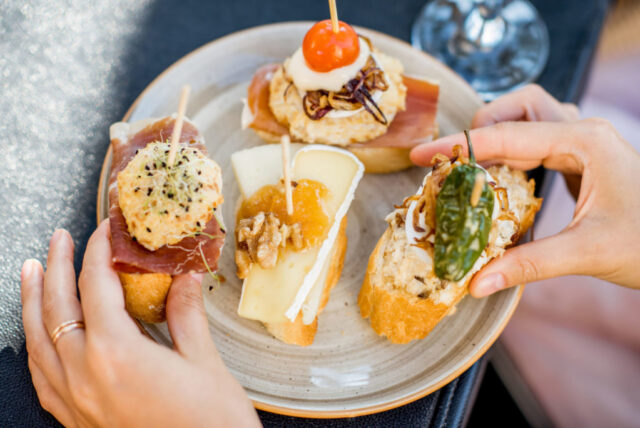With all the talk of fake news, it’s time to assess the true state of affairs in Spain. Things are more complicated than you might think, and they have evolved much over the last few years.
This guide is aimed at people who don’t know much about gluten free, but would like to visit Spain and plan for the fact that they will have to avoid gluten. Read through it to understand the basics, and I will update it as and when I go to Spain, so the information is constantly up-to-date and easy to navigate.
As part of our ongoing Gluten Free guide to Spain, we are pleased to present this update on a guide to Spain that is currently in its first edition but will soon be replaced by a new, updated guide to Spain that is in its second edition. We will take the time to improve our guide to Spain by adding new information on the Spanish diet and Spanish gluten free foods that we have learned during our research and expertise as gluten free travellers.. Read more about gluten-free diet and let us know what you think.
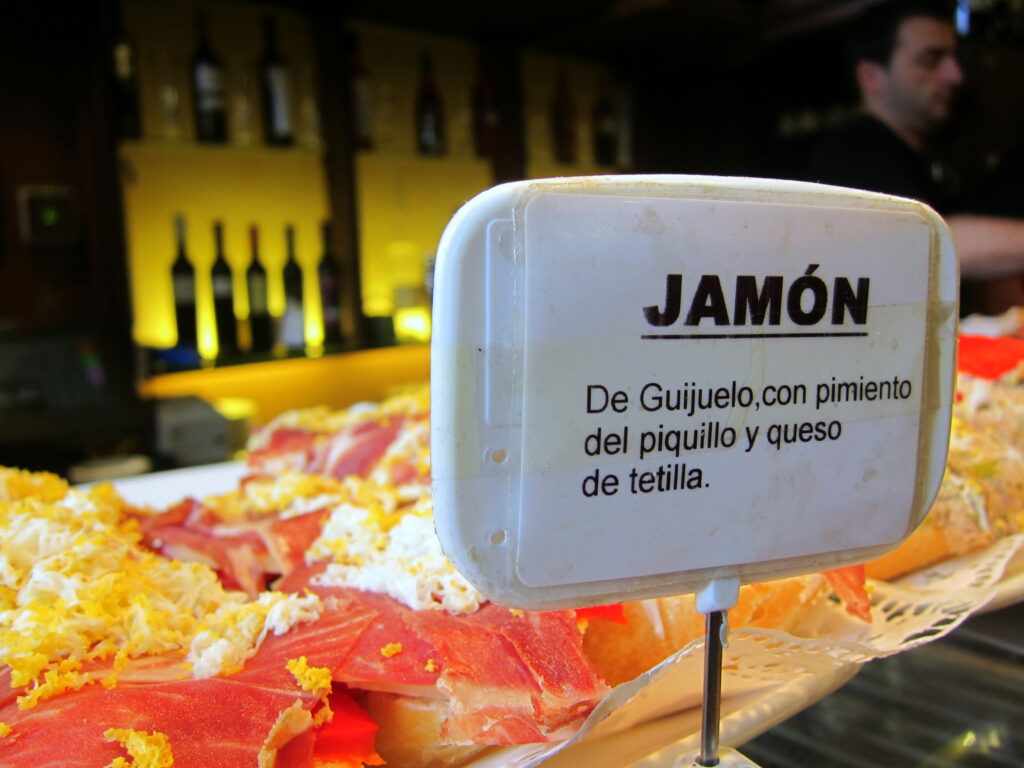
Tapas was what I imagined Spanish cuisine was when I was younger. I didn’t have access to many other Spanish foods or influences, so the pintxos were the ones that stuck out. However, like with any nation with a long history of exploration and conquest, as well as a vast geographical area, regional specialities vary greatly.
The Spanish food we know and enjoy today was shaped by geography, climate, waves of invaders, and conquests of new areas. The nation is rich with high-quality basic foods and creative dishes for celiacs. I’ve focused my gluten-free Spain guide on safe foods and cooking methods, as well as some places to visit in Barcelona and across Spain.
In a December 2016 interview, Matt Golding, author of Grape, Olive, Pig: Deep Travels Through Spain’s Food Culture, stated:
Like all great cuisines, Spanish food is highly regionalized, but the homogenizing influences of modernity in general, and tourism in particular, threaten this variety. Paella, sangria, and patatas bravas may now be found in every part of the nation. However, as a tourist, you must be mindful of your surroundings and make dietary choices appropriately. What’s going on in Galicia? Eat octopus, shellfish, and gooseneck barnacles with a crisp Albario to wash it down.
Eat jamón and fried little fish when in Andalusia, and drink sherry. Thick-cut steaks and whole-grilled fish, as well as a world of pintxos, may be found in Basque region. Those who eat paella in Madrid and sangria in San Sebastián are the ones who are disappointed by Spanish cuisine. Of course, there is a common language that unites Spanish cuisine — high-quality olive oil, cured pig, and a lifelong passion for seafood — but it manifests itself in a variety of ways as you travel the nation.
In Spain, food is extremely important, and many establishments can easily accommodate a celiac diet. This article, like my Portugal one, is designed to help you overcome your fear of ordering and enjoy your Spanish meals.
A word on dining habits: Spaniards eat late. Dinner usually begins about 8 p.m., and if you go, you will almost certainly be the only ones in the restaurant. Snack items had the most wheat in them, therefore celiacs who are used to eating earlier should stock up on snacks at their hotel or apartment so that they can wait until supper.
THE LAST TIME THIS POST WAS UPDATED WAS IN JANUARY 2024.
Do you already have a gluten-free translation card in mind? You may purchase my Spanish cards, as well as those from Italy, Japan, Greece, Portugal, and other countries, right here!
Table of Contents for Gluten-Free Spain
In Spanish, there is a gluten-free translation card. In Spain, gluten-free food is available. Celiac-Friendly Stores and Restaurants in Spain If you’re gluten-free, there are certain foods you should avoid in Spain.
Gluten-Free Translation Cards Customized for Spain
Each card in the guide has been prepared using celiac-specific information, cross-contamination warnings, and double-checked translation from native speakers. The correctness of the food names and meals on the card is also double-checked with various areas in Spain.
Note: The card may be purchased via Gumroad, a reputable 3rd-party store that utilizes https to ensure that your information is secure. I am not collecting emails or personal information from those who purchase the card.
What makes this gluten-free Spanish card unique?
On my trips, I tried many different translation cards and still felt sick. I may be more sensitive than other celiacs, but even a little quantity of contaminated frying oil or wheat-thickened food sauce may make me sick for days. Not to mention the subsequent joint discomfort and inflammation.
This card differs from previous celiac cards I’ve seen in that it not only lists all of the local food names for what to eat and what to avoid, but it also mentions the risk of cross contamination. It’s also been studied by celiacs and translated by a native speaker who understands the illness and local cuisine.
I translated the card into Catalán since it is the most widely spoken language in Catalunya. The Spanish card is the greatest choice for people going abroad. Catalán may be more helpful for the Costa Brava, Costa Dorada, and Barcelona regions.
On the purchasing page, you may get an English version of the card so you know exactly what you’re getting.
Spanish gluten-free card, customized for Spanish foods:
Gluten-free Catalan card, customized for meals in Spain and Catalunya:

Thank you very much to Patricia and Noema for verifying the translations and meals for these Spanish cards.
The Costa Brava tourist board and Laura Perez both assisted in translating and verifying the correctness of the English versions in Catalan.
Spain’s Gluten-Free Dishes and Snacks
According to translators and my personal lunch experiences when traveling across Spain, the following meals are frequently wheat-free.
As with any location, whether at home or abroad, it’s essential to double-check that no flour was used in the sauces or to thicken, etc. on a case-by-case basis.
Trigo, cebada, avena, salsa de soja, y centeno (wheat, barely, oats, soy sauce, and rye) are the foods you don’t want to consume in Spanish.
Savory
- Paella is a traditional meal that many visitors like. It’s usually harmless, but you should inquire whether it’s made with bouillon cubes or “caldo Avecrem,” a popular bouillon in Spain.
- Pipirrana is a diced vegetable salad with tuna or cod, tomatoes, onions, and peppers.
- Calamares or mariscos a la plancha: I adore squid, but typical calamares are breaded and deep fried, which I don’t like for. Instead, I had excellent success asking for mine “a la plancha” (grilled). Plus, you get to sample more of the delectable fish this way.
- Pulpo a la gallega: sliced cooked octopus covered with olive oil and frequently paprika.
- Escalivada is a dish made out of a variety of roasted or grilled vegetables. In Catalan, it’s known as esqueixada.
- Pisto manchego is a tomato-based vegetable stew made with onions, zucchini, garlic, salt, and parsley.
- Lacón with grelos (cooked ham with greens) is a traditional Galician dish.
- Pickled olives, gherkins, and spring onions are known as aceitunas, pepinillos, or cebolletas. If the olives are filled with “pan rallado,” they aren’t safe to eat.
- Peas with Serrano ham (guisantes with jamón Serrano).
- Calamares/xiba na sa tinta (squid or octopus cooked in their own ink) is a Galician cuisine. Celiacs should be OK with this, but inquire whether any flour is used to thicken the sauce.
- Huevos rotos: literally translated as “broken eggs,” this meal is usually served with French fries and Serrano ham on top. Check to see whether the fries were cooked in tainted oil.
- Pescado, pollo, or carne a la plancha: Like the squid, fish, chicken, or meat served “a la plancha” is typically cooked to perfection. It’s an excellent idea to inquire about marinades and whether or not soy is utilized. Meat or fish was never marinated throughout my travels, and was simply cooked with fresh herbs, garlic, butter, or lemon. YMMV, but if nothing else on the menu seems to be safe, I’d order a protein “a la plancha” with a side of vegetables or a salad. Cordero (lamb) and cochinillo are included (roasted pig).
- Marmitako is a typical Basque meal made with potatoes, tuna, onions, peppers, and tomatoes served aboard fishing boats in the Cantabrian Sea.
- Anchovies marinated in oil or vinegar are known as anchovies en aceite or anchovies en vinagre.
- Serrano ham or Ibérico ham (cured ham): THANK YOU, GOD THIS IS NOT EXCLUSIVE. A brief explanation of the distinctions between Serrano and Ibérico (bear with me please). Both kinds of ham come from the rear leg and are dry-cured. Serrano (Sierra ham) is made from a white pig, while Ibérico (Iberian ham) is made from a pata negra (black foot pig), which rummages and forages on acorns from huge oak trees. There are many kinds of Ibérico hams, each with its unique diet and curing time. To put it bluntly, for ham connoisseurs, Spain is a dream come true. Even if you have celiac disease.
Jamon is a delicacy that is both delicious and gluten-free.
- Unless processed, queso (cheese) is generally harmless.
- Garbanzos are roasted chickpeas that are frequently seasoned with cumin and pepper. Make sure no flour is used to thicken the spice mixture.
- If you order patatas fritas or papas bravas, be sure to inquire about tainted oil and wheat flour. The potatoes were neither dredged or coated with flour for crispiness, unlike in North America. Restaurants refused when asked, claiming that doing so would spoil the taste.
- Sardines piled on a skewer and cooked over a fire or barbecue are known as espetos de sardinas, a Málaga speciality. If you inquire about marinades, these skewers are usually often just seasoned with salt. Here are some photos.
- Tortilla de patatas (Spanish omelette): A Spanish omelette prepared with eggs, potatoes, onions, and garlic. While flour is sometimes included in North American versions of this famous dish, I have never seen it in Spain. It’s usually important to inquire, but I was able to eat this meal throughout my Spanish travels.
- Salsa alioli casera: A variety of meals are served with salsa alioli, which may be seen on menus all throughout Spain. This is a garlic mayonnaise that is prepared with just garlic, eggs, vinegar, and olive oil. I used the term casera, which means “produced in home.” You’ll want to know exactly what goes into the sauce! As with any other sauces or marinades, the more processed ones are more likely to include wheat or gluten.
- Butifarra casera is a Catalan speciality prepared with pig meat, vinegar, cumin, and other spices — but no wheat. I repeat casera once more to make sure the restaurant understands what’s in it! When I was in Costa Brava, I purchased them from a butcher and cooked them at home with white beans and boiled greens. Delicious.
- Pimentos de Padrón are blistered Padrón peppers that are served with sea salt and olive oil. Confirm that there is no tainted oil. If you’re as fascinated with this meal as I am, Serious Eats has a recipe for you.
Sweet

- Flan, natillas, or crema Catalana: eggs, sugar, and cream are used to make flan, custard desserts, or crème brûlée desserts. In Spain, unlike in North America, they are often devoid of flour. As usual, it’s critical to inquire and confirm that they were produced in-house and in a secure manner. Tocino de cielo is a variation of flan prepared using egg whites instead of whole eggs that is popular in areas of Spain.
- Rice pudding (arroz with leche).
- Marzipan is a confection made of almond flour and sugar that is often fashioned like fruit. Almost often, it’s just almonds and sugar.
- Turrón is an almond and egg white nougat candy that is sweetened with honey and sugar.
- Frutas en almbar: Fruit that has been sweetened with syrup, similar to those seen in Mexico.
- Yemas de Santa Teresa, often known as yemas, are a thick, sweet dessert confection prepared from egg yolks and sugar, which is then dusted with icing sugar. The term “Yemas de Santa Teresa” refers to a trademark for a business based in Avila, Castile-León, where the sweets were created. They may also be found in bakeries as yemas.
- Helado casera: Ice cream produced in-house is frequently gluten-free, but it’s essential to check the label at grocery shops. In a couple of the establishments I visited, flour thickening had been added to the gelato.
Drinks
Wines, sangria, sidra (cider), cava (wonderful sparkling Spanish wine), pacharán or patxaran (in Basque), a sloe gin liquor, and calimocho (wine and cola mixed) are all safe to consume. Beers, as is customary, are not safe.
Celiac-Friendly Stores and Restaurants in Spain
Gluten-free ingredients may be found in a variety of locations, ranging from small groceries to larger chain stores and organic stores.
Gluten-free goods are available in the following supermarkets. To search for places, click on the link to be sent to their home pages:
Many regional celiac organizations in Spain are listed here by Spain’s Celiac Society; scroll down beyond the map to find the URLs for each.
Celiacs de Catalunya, which covers Barcelona, the Costa Brava, and the Costa Dorada, offers a list of shops and pharmacies that sell gluten-free products, as well as a list of restaurants in the area that serve celiac-friendly foods.
Aquí está un one-pager en inglés de FACE, la Federación de Asociaciones Celiacas de España, sobre comer sin gluten en España.
Restaurants in Barcelona that are gluten-free
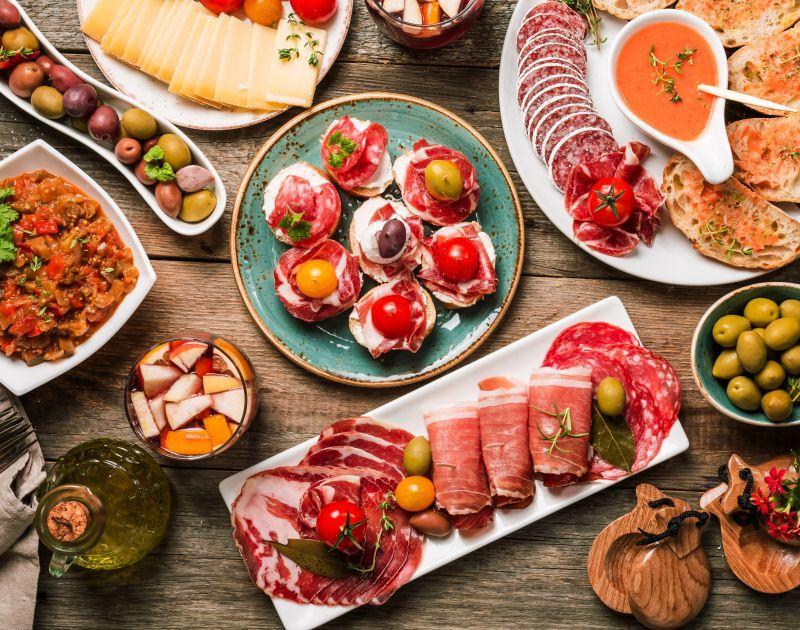
- Pizza, spaghetti, and risotto are all gluten-free at Il Piccolo Focone. It’s a paradise, a beautiful gluten-free paradise.
- Copasetic offers a comprehensive brunch menu with many gluten-free choices. It’s a great spot to dine.
- Agullers is a small restaurant with a daily menu. They were quite fair, and despite the fact that they were not celiac-specific, they were willing to accommodate my dietary concerns. The eatery was delighted to use maize flour instead of wheat in its recipes. Only for lunch.
- Check out Conesa’s gluten-free sandwiches for a fast lunch. I ate there in the Gothic district, but there is another one in Sants.
- Because I was staying in the old quarter, I frequented SushiYa2, where the salmon sashimi was exceptionally fresh, and they had gluten-free soy sauce on hand to assist this celiac.
- Pork.. As the name implies, Boig Per Tu is all about pork. If you have celiac disease, the staff was extremely understanding, and they also offer gluten-free bread for pork sandwiches, if that’s your thing. The bean and ear stew was delicious.
- Mosquito’s gluten-free soup dumplings, delicate pillows stuffed with pork and eel and cooked in bamboo steamers, are still on my mind.
- Jansana is a gluten-free bakery in Barcelona that serves a variety of delectable delicacies. Celiac disease sufferers rejoice!
A dream come true: rice flour dumplings with no wheat protein.
- I satisfied my sugar needs in Barcelona’s Baci D’Angelo, another gluten-free bakery.
- Arepas are something I look for in every place I visit since they’re always tasty and nearly usually gluten-free. I bought mine in Barcelona in La Taguara Areperia, a run-down areparia in the city’s historic district. CLOSED
- Messié Sin Gluten, a 100% gluten-free restaurant with no cross-contamination problems, was also suggested by a reader named Christina. They provide pasta, pizzas, and a variety of other dishes.
San Sebastian is gluten-free.
- Restaurante Ganadarias in San Sebastian offers gluten-free tapas, as well as a gluten-free menu on their website. One of the few gluten-free tapas restaurants I’ve discovered.
Madrid is gluten-free.
- El Arrozal is a gluten-free paella restaurant with three locations in Madrid. They are well aware of the dangers of cross-contamination and prepare the paella separately from any gluten-containing meals.
- Solo de Croquetas, a new gluten-free restaurant in Madrid, is the first of its kind, allowing celiacs to experience the wonderful bite-size enchantment of Spanish croquettes. That’s all the restaurant offers, and they’re all gluten-free.
- Also in Madrid, Devour Madrid offers a lengthy and comprehensive guide on gluten-free dining in the city, including a link to the Spanish Celiac Association.
- The gluten-free churros from Maestro Churrero in Madrid have been declared safe by the local gluten-free organization!
- Celicioso is a fantastic gluten-free bakery that currently has four outlets in Madrid, one in Ibiza, and one in Marbella. They provide a wide selection of cookies, cakes, and tarts, as well as loaves and delectable breakfast and lunch options.
- Celiaquitos provides a searchable directory of gluten-free restaurants and meals in Spain.
See here for a more comprehensive gluten-free guide of Madrid eateries, including dairy-free choices. This directory also includes a list of smaller stores in Madrid that sell gluten-free items.
Asturias is gluten-free.
Cangas Sin Gluten, a regional collection of restaurants, lodging, and stores in southwest Asturias devoted to offering safe cuisine for celiacs, is a good place to start if you want a more rural experience of Spain but are concerned about finding alternatives outside of the main towns. It’s a fantastic resource for the area.
Tenerife is gluten-free.
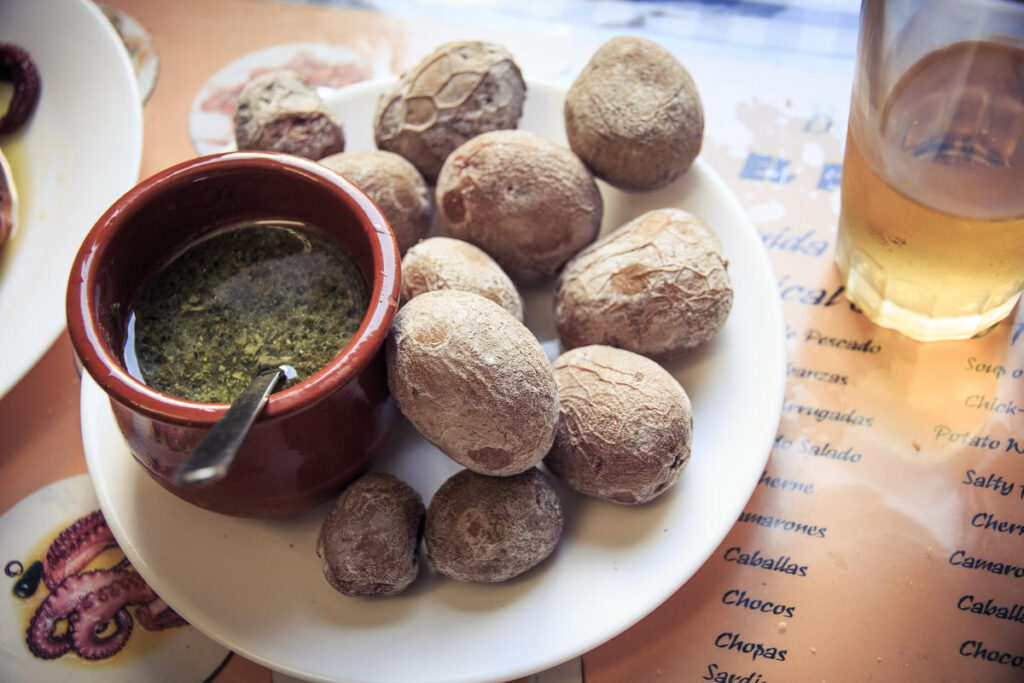
- Tenerife’s Herbolario Garoe offers gluten-free goods certified for celiacs, as shown by their website, and the store is a wonderful location to stock up on snacks and breakfast items.
See this link for a list of gluten-free shops on Tenerife.
- Taste sans Gluten, a 100% gluten-free restaurant in Tenerife, offers Italian cuisine in a lovely environment – and is, of course, ideal for celiacs!
- The celiac organization has certified Guayadil, which serves local fresh fish and organic foods – all nicely presented, I may add!
- Casa Pache in Tenerife, according to one reader, offers gluten-free, celiac-safe croquetas.
- The same reader informs us that in Logroo’s Calle Laurel, renowned for its delectable pintxos, bright blue Sin Gluten labels can be seen on the windows and doors of numerous restaurants, indicating that even celiacs are welcome!
Please check this link for a list of gluten-free eateries in Tenerife.
If you’re gluten-free, stay away from these foods in Spain.
These are foods that you should avoid when in Spain that are not safe for celiacs.
- Chanchigorri cake, also known as txantxigorri or chalchigorri, is a kind of Spanish pastry from the region of Navarre in northern Spain.
- Bombas and croquetas are breaded, fried, and potato-filled bombas and croquetas. Unfortunately, this is not healthy for your celiac stomach.
- Calamares are deep-fried breaded squid. As previously said, inquire whether grilled calamares may be substituted. Calamares a la romana, a Galician dish of battered squid that is subsequently deep-fried, is equally dangerous.
- Chicharrón or Cortezas de Cerdo: Deep-fried pig rinds or skin. I can’t add them to the “safe” list since the oil used is nearly often the same as the oil used for the other breaded, fried tapas on this list.
- Coques: Flour-based Catalan flatbreads with or without toppings.
- Empanadas or empanadillas are dough pockets filled with a variety of tastes.
- Leche Frita is a dessert prepared by thickening milk with flour and sugar until it forms dough, then frying it and serving it with cinnamon. Although it seems to be delicious, I am unable to consume it.
- Fried dough treats known as churros.
- Polvorones are a type of bread native to Andalusia.
- Montaditos: Snacks served on bread slices, often with wine.
- Embutidos such as mortadela, morcilla, chorizo envasado, salami, and salchichón are all cured or dried meats that may include wheat, as in North America and Europe. While I included butifarra to the safe list since the recipe never asks for flour, the others on this list should be verified on an individual basis.
- Thickened sauces, such as bechamel: if the gravy is thick, you should be asking questions.
- Pan with Tomate: grilled bread covered in tomatoes, olive oil, garlic, and salt is a favorite tapas choice.
- Crisp flatbreads or biscuits known as tortas or tortas de aceite.
- Bocadillos, also known as bocatas, are a kind of sandwich similar to a sub.
- Albóndigas are traditional Spanish meatballs prepared with breadcrumbs or breadcrusts.
- Pinchos o pintxos are tiny nibbles spiked with a toothpick on a piece of bread (see picture below). The name alludes to a skewer, often known as a toothpick, which is an important component of the meal. There are hundreds of different pintxos to choose from, but many of them come with bread. Some restaurants have been prepared to plate a pintxo without bread and simply give me the topping, but this has its own dangers depending on the cooking, so I’ve been hesitant to do so.
- Escudella is a thick Catalan stew made with pasta.
- Filetes rusos: This meal is similar to what the English term Salisbury Steak, or hamburger steak: ground beef and other seasonings are formed into a patty and covered with flour-thickened sauce.
- Alfajores: a Christmas dessert significantly different from alfajores from Argentina, but nonetheless forbidden.
- Fritos de boquerones: fried anchovies dredged in flour.
On the bread front, it’s a no-go.
More Information about Spain
If you’re planning a trip to Spain, here are some great books to read to prepare for your trip.
Books that serve as guides
The most current Lonely Planet is from 2018, but a March 2024 edition is on the way.
Food Books About Spain that I Recommend
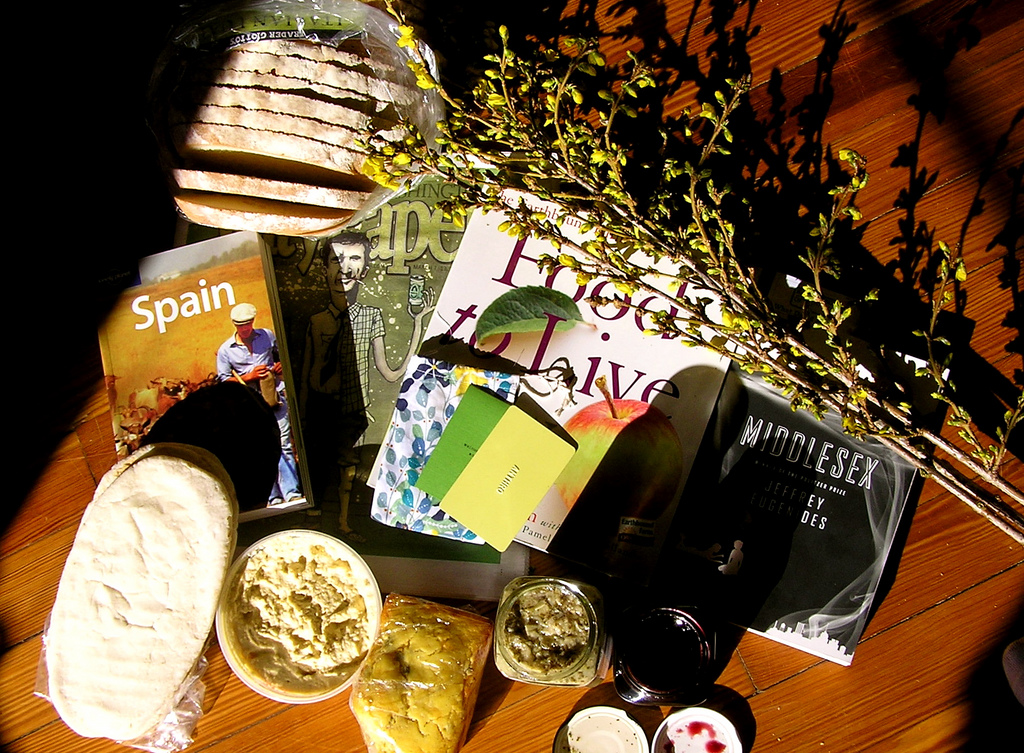
- Matt Goulding’s book on Spain, Grape, Olive, Pig: Deep Travels Through Spain’s Food Culture, is cited at the opening of this article. The book not only provides context and history for the meals featured, but also tells the kinds of food stories I enjoy. Small producers, chefs, artisans, and more are featured alongside stunning photography. I’m looking forward to reading the remainder of Matt’s books (his first is on Japan).
- Gerald Hirigoyen and Lisa Weiss’ cookbook Pintxos: Small Dishes in the Basque Tradition features the small ‘skewered’ plates prevalent in Basque region. While we are unable to consume the bread, the recipes are simple to follow and can be substituted with gluten-free bread. These Basque dishes are reworked for American pantries in the book, making them simple to prepare at home.
- The Food of Spain – Claudia Roden is a true foodie, and this wonderful book explores the incredible diversity, flavor spectrum, and color of Spanish cuisine. Claudia’s cookbooks are all fantastic, and this one is no exception. The photographs are really stunning.
- Spain: Recipes and Traditions from the Basque Country’s Verdant Hills to Andalusia’s Coastal Waters – It was a joy to cook through author Jeff Koehler’s image of his adoptive nation, which I met in Barcelona and had some tapas with. His book focuses on simple meals with complex flavors, and it has every recipe you’ve ever desired. This book has a large glossary and a section on culinary methods, making it almost everything you need for a Spanish cookbook at home.
In Spain, eat happily and safely!
See here for the rest of my gluten-free guides.
You may have read our first gluten free guide to Spain in 2015. But as the world’s population continues to age and eat more gluten free, we’re back with some more wonders of the country. And it’s all about the food.. Read more about gluten free spanish recipes and let us know what you think.

